
Museum Feature: British Motor Museum
Submitted by:

THE BEST OF BRITISH
The British Motor Museum at Gaydon is well worth a visit for anyone with an interest in engines and engineering…
Based at Gaydon, just off junction 12 of the M40 between Oxford and Birmingham, the Museum and Collections Centre at the British Motor Museum house the extensive collections of the British Motor Industry Heritage Trust. This is the body which cares for the largest collection of historic British cars in the world, along with an archive containing more than a million objects, from photographs and film, to publicity material and technical records.

As well as an awesome array of superbly preserved or fully restored vintage, classic and historic British cars and other related automotive memorabilia, we found a fascinating number of technical engine displays, many featuring elaborate cutaways to show the internal workings.
Here we’ve presented just a few of the most significant displays, photographed and noted in just a few hours while on our return journey from the visit to Lotusbits in Warwickshire and we guarantee that anyone with an interest in engines and engineering will find a similar visit well worthwhile, even better if you can devote a whole day to it…

1959 SUPERCHARGED 1.5 MG ENGINE
The streamlined MG EX 181 was entered into the Class F land-speed series for cars with engines between 1.1 and 1.5 litres. Displacing 1506 cc from a bore of 73.4 mm and a stroke of 88.9 mm, the Shorrock supercharged double overhead camshaft four-cylinder MGA engine, running on 86 per cent methanol mixed with nitrobenzene, acetone and sulphuric ether, produced 290 hp at 7000 rpm.
On August 23, 1957 Stirling Moss took it up to a top speed of 245.64 mph (395.31 kph) at the Bonneville Salt Flats at Utah, surpassing the previous land-speed record of 203 mph.
Returning to Bonneville in 1959, with the engine now tuned to 300 hp at 7300 rpm, Phil Hill achieved a new record top speed of 254.91 mph (410.23 kph).
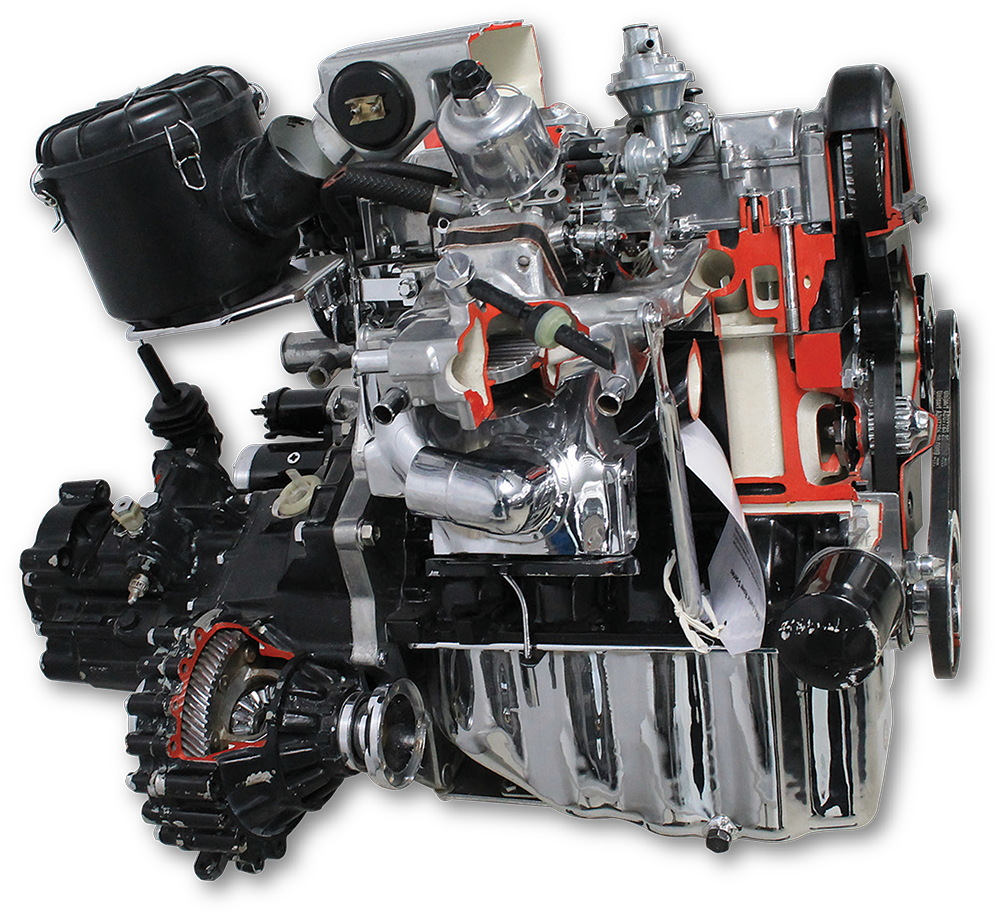
1984 AUSTIN ROVER S SERIES
This S-series 4-cylinder inline single overhead cam 8-valve petrol engine was used in conjunction with a Volkswagen 5-speed gearbox for the Austin Maestro and Montego from 1984 to 1993. With a bore of 76.2 mm and a stroke of 87.6 mm it displaced 1598 cc and produced 85 hp. This engine also made an appearance in certain MG derivatives and the early Rover 200. Sadly, not all the production engines were as meticulously finished as this cutaway display engine.
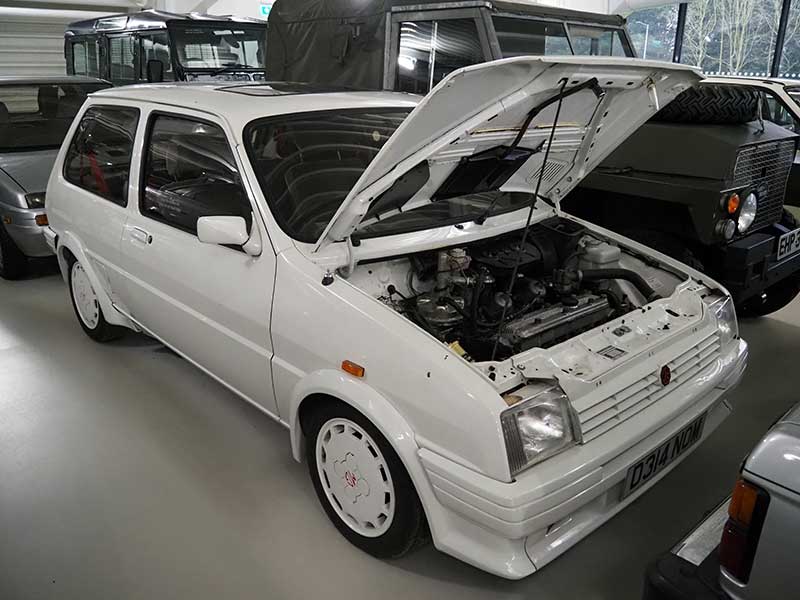
SIX APPEAL
A rare prototype from the Issigonis ‘Small Car Future Projects’ department, this Metro is powered by a six-cylinder 1275…
Ask someone to associate the combination of the words 'Metro' with 'six-cylinder engine' and the undoubted result would be the MG Metro 6R4 from the mid-Eighties, the mid-engined four-wheel drive Group B rally car, powered by the turbocharged 3.0-litre V6 doc engine.
But we recently came across a very different combination, while perusing the numerous exhibits in the collection at the British Motor Museum at Gaydon. From a distance, parked partially obscured in the second row, it looked just like a fairly ordinary all-white 1986 MG Metro and wouldn't normally have warranted a special excursion across the display room.
But with the bonnet obviously left open for a reason it was worth a look, and then a second look when the length of the cam cover was noted, and the number of spark plug leads were counted. Here was an inline six-cylinder engine, installed transversely, and quite a good fit it was too.
It seems that, following his retirement in 1971 Sir Alex Issigonis continued to work for British Leyland as a consultant and this MG Metro is his last prototype. Fully road legal, with the registration D314 NOM, it was put on the road only eighteen months before his death and less than a year before his 'Small Car Future Projects' department was disbanded.
Although Issigonis commented 'the layout is very untidy because I only had two fitters to do the job in rather a hurry in fact the installation is quite impressive. Usually an inline six-cylinder would be too long to fit in a transverse installation in a small car, but in this case the gearbox was placed under the engine in classic Issigonis style. The bulkhead has been modified to make space for the air cleaner for the twin-carb installation but otherwise the car is fairly standard, to show how a 9X engine might work in a modern hatchback of the 1980s.
Clearly very different from the usual A-series, though, the six-cylinder unit - created from what was essentially one and a half of the 850 cc fours - gave the same 1275 cc capacity as the Metro's original A-series. Although it was rated at a modest 100 hp, it would undoubtedly have been very smooth and refined in operation.
Subsequent enquiries with the museum archives and Metro enthusiast circles have revealed no more details, so we'll be very interested to hear if any of our readers have any further information about this conversion.
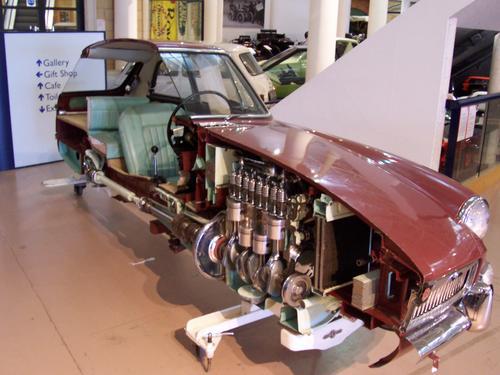
HALVED MGB GT
Known affectionately by the museum staff as 'The Divorce model' this unique 1965 MGB GT was sectioned into two halves for a special display when it was launched at the British Motor Show at Earl's Court in October 1965. It was exhibited along with the slogan 'MG magic in a new shape' and was subsequently upgraded to Mk 2 specification and displayed at the Turin Motor Show in 1967.
Often referred to the 'the poor man's Aston Martin', the MGB GT shared the same mechanical specifications as the two-seater 'MGB, the power unit being the 1798 cc five-bearing engine with twin HS4 SU carbs developing 95 hp.
Contemporary independent road tests recorded acceleration from 0-60 mph in 13.1 seconds, 70 mph in 18 seconds, with nearly 80 mph achievable in third gear, enabling a standing-start quarter-mile time of 19.6 seconds and a top speed of just over 100 mph. Typical average consumption on 100 octane Esso Golden fuel was 26.3 mpg. The MGB GT was fitted with a larger fuel tank (12 gallons) compared with the MGB (10 gallons).
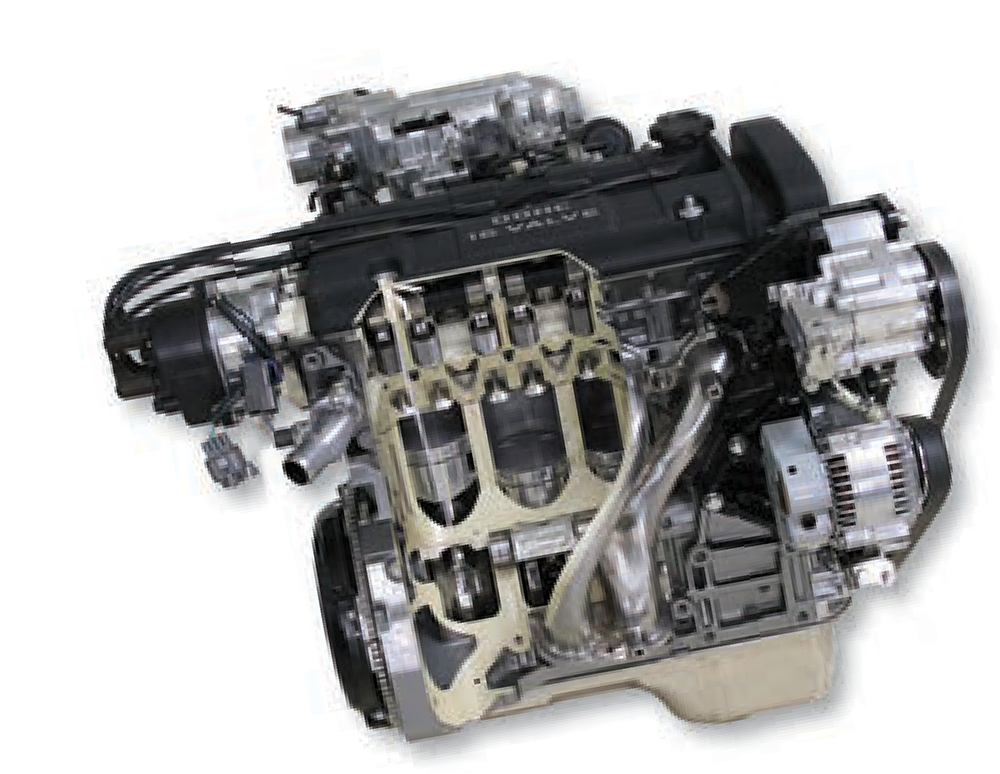
H-SERIES HONDA (ROVER) ENGINE
Superb cutaway of the H-series Honda engine that was used in the Rover 623 between 1993 and 1999. The double overhead camshaft 16-valve 4-cylinder petrol engine has a bore of 87.0 mm and a stroke of 95.0 mm for a displacement of 2259 cc and developed 160 hp and torque of 211 Nm (156 lb.ft.) The Rover 600 series was based on the Honda Accord, with over a quarter of a million produced.
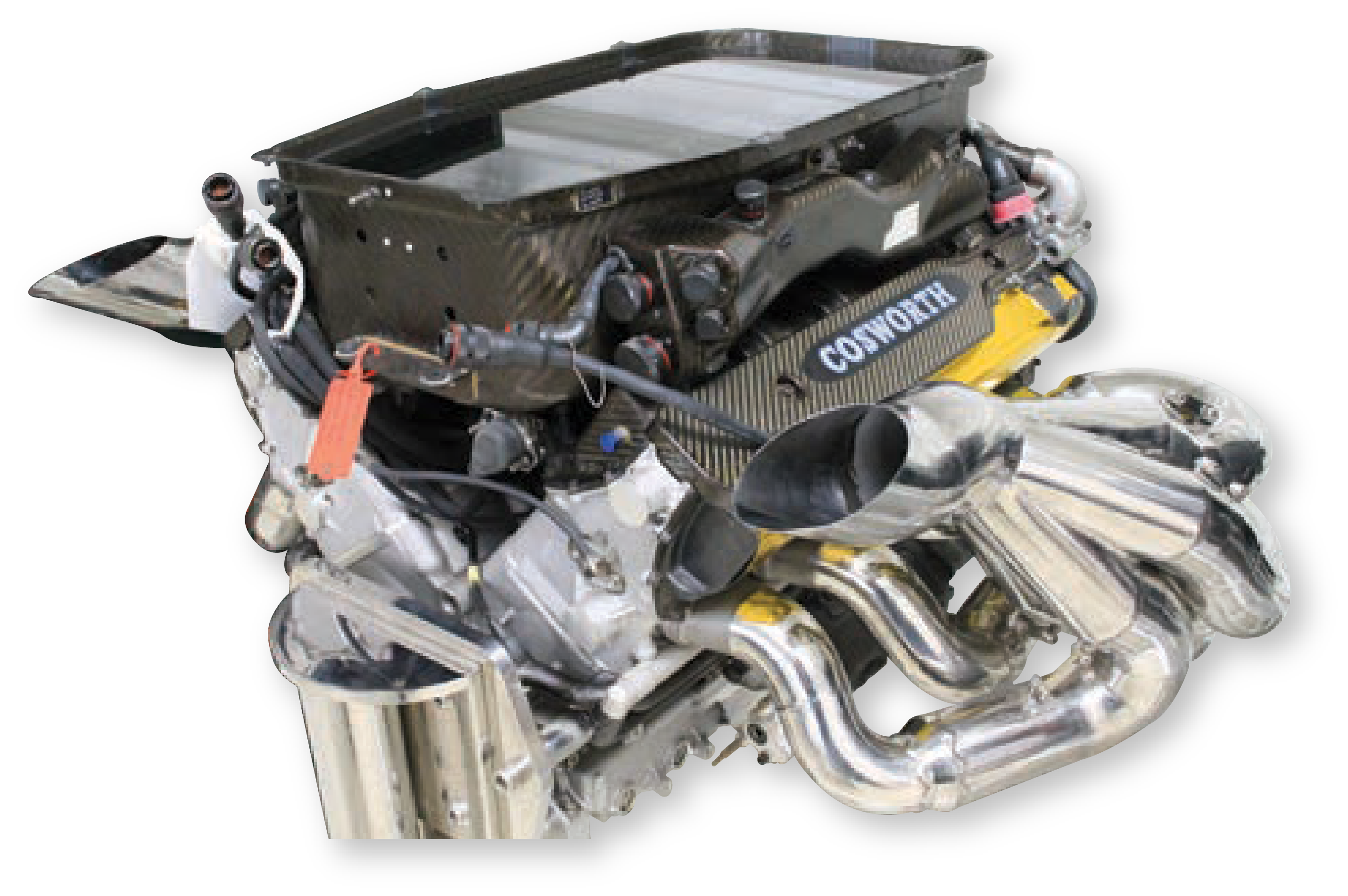
JAGUAR F1 COSWORTH ENGINE
This naturally-aspirated 800 hp 3-litre (2998 cc) V10 CR1 engine was first used in the 1999 Stewart Formula One car (SF3). The team was later purchased by Jaguar to become the Jaguar F1 team and the engine was later incorporated into a number of cars including the 2000 Jaguar F1, 2001 Jaguar R2, the first half of season 2002 Jaguar R3 and the 2003 Minardi PS03. Despite the branding, no Jaguar engineering was involved and although the integrity of the engine was without doubt, a poor performance in general meant that the team only recorded two podium places in 85 races. Nowadays Jaguar Racing competes in Formula E under the name Panasonic Jaguar Racing.
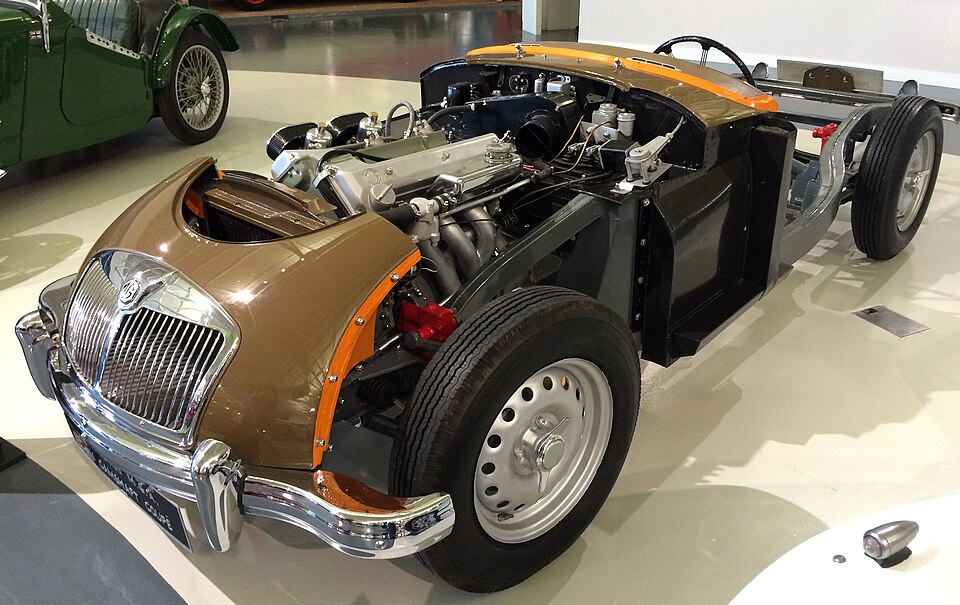
1958 MGA TWIN-CAM
While the MGA was introduced in September 1955, the MGA twin-cam which followed three years later was superficially similar but had a specially developed version of the B-series engine, a four-cylinder unit displacing 1588 cc, with double overhead camshafts, developing 108 hp and capable of achieving a top speed of 113 mph. A limited production model, only 2,111 examples were made before it was discontinued in 1960.
This specially sectioned left-hand drive display model appeared at the British Motor Show at Earl's Court in 1958 and was possibly also shown at the Motor Show in New York in 1959. In 2013/2013 the Trust's volunteer team stripped, restored and repainted the car over a period of eight months, retaining much of the original colour scheme that it had acquired during its lifetime.
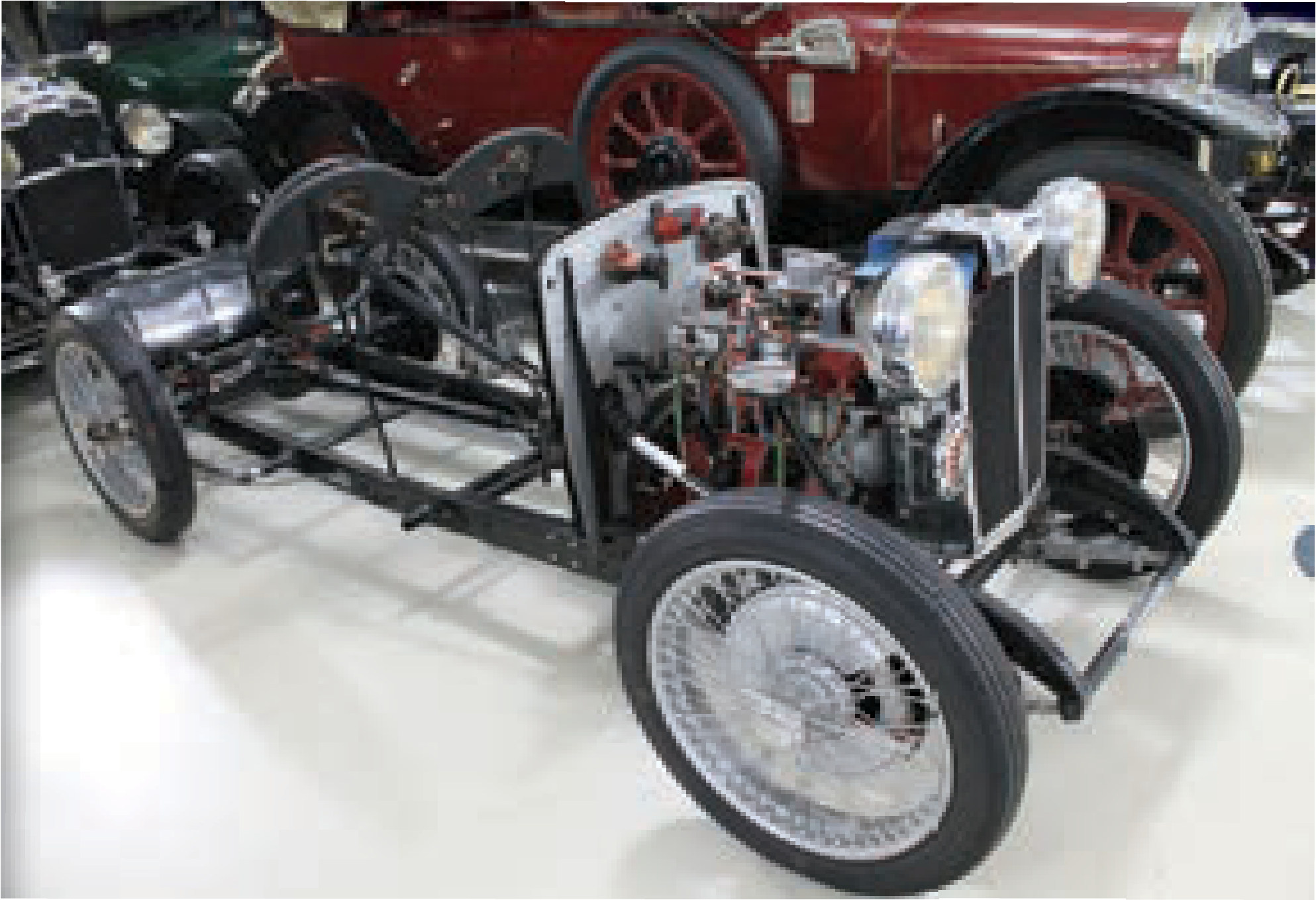
1934 MG PA MIDGET
Introduced in March 1934 a total of 2000 MG PAs were manufactured, with either two- or four-seat open bodywork configuration, up until October 1935, when it was replaced by the PB-type with a larger capacity engine.
The PA used a modified version of the engine that had previously been used in the 1928 Morris Minor, a four-cylinder 847 cc unit with a single overhead camshaft that was driven from a vertical axle passing through the dynamo. With a crossflow cylinder head and twin SU carbs it developed 35 hp and achieved a top speed of 74 mph.
This sectioned display model was originally built in November 1934 as an ordinary production example and was subsequently acquired by the Lancashire Constabulary which used it as a police patrol car. The Constabulary's Motor Driving School obtained the car for training purposes and the chassis was specially prepared for instructional demonstrations.
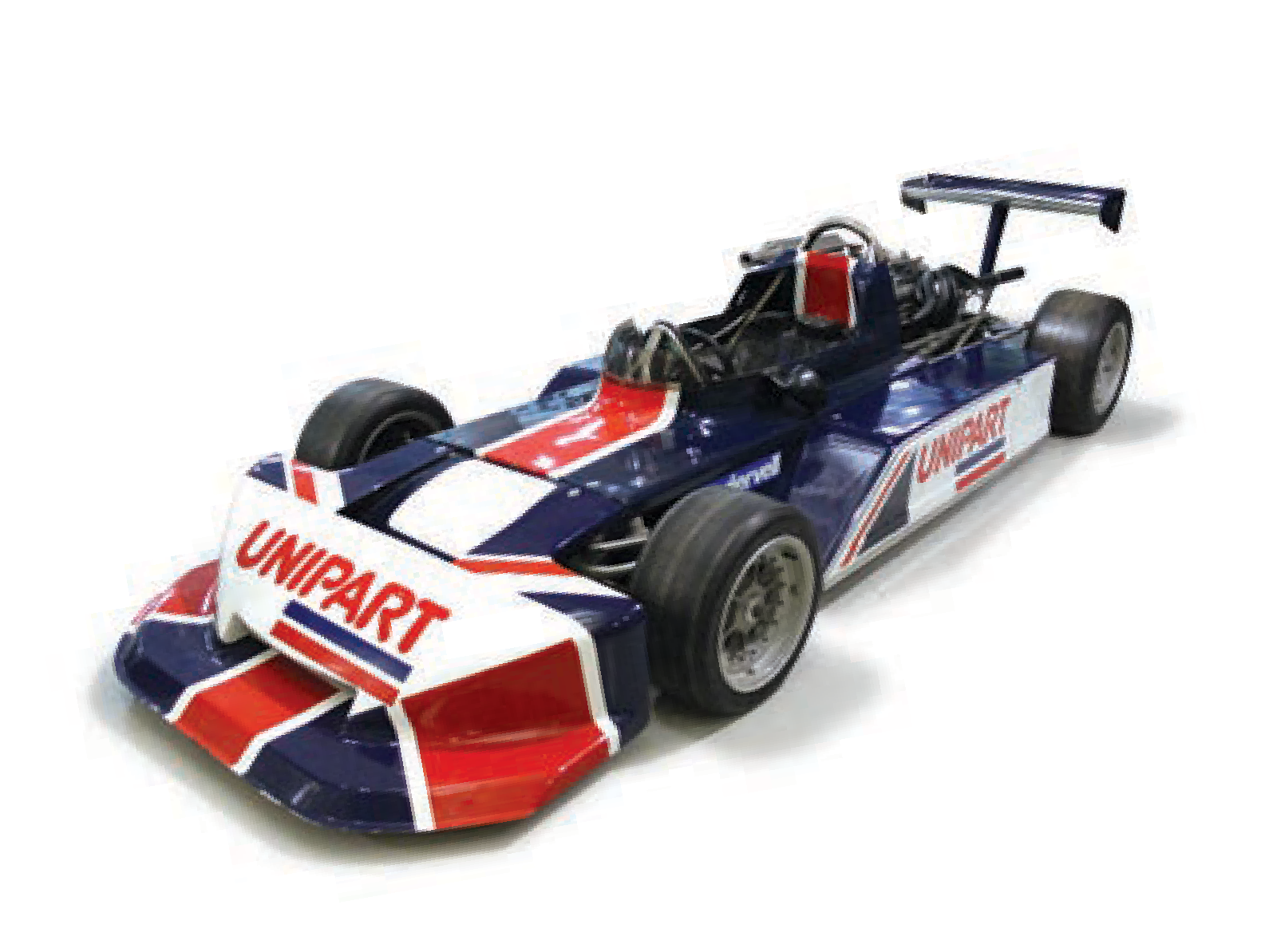
MARCH-TRIUMPH F3 ENGINE
Although British Leyland no longer ran 'works' rallying or race teams during the late 1970s, many of the companies which formed the group still maintained an involvement, with one example being the sponsorship of the 1980 World Championship winning Williams F1 Grand Prix team by Leyland Vehicles.
Unipart, at that time a British Leyland parts subsidiary, also took an interest in motorsport with sponsorship of this March Formula 3 car. Powered by a highly developed version of the four-cylinder 2.0-litre 16-valve engine from the Triumph Dolomite, developing 165 hp, it competed in the British Formula 3 series from 1976 until 1979.
Notable drivers of the Unipart March-Triumph 783 F3 car were Tiff Needell, Tony Dron and Brett Riley, as well as Nigel Mansell who went on to become the F1 World Champion.
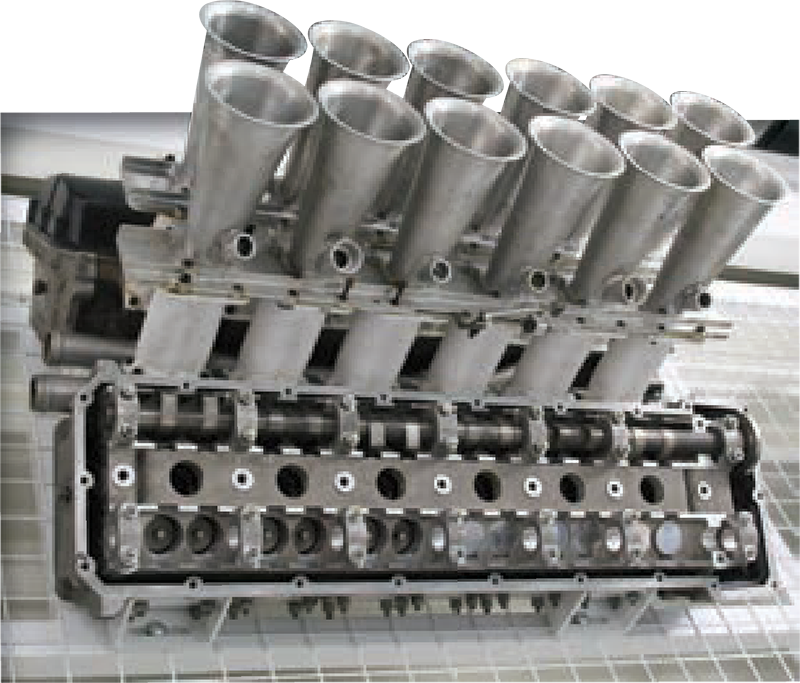
PROTOTYPE JAGUAR V12 QUAD-CAM
This is a pair of twin-cam cylinder heads from a prototype V12 engine that was developed for use in the Jaguar XJR programme. The production V12 engine has only one camshaft per cylinder bank but the test and race engines had two camshafts per bank - the so-called 'quad-cam' engine.
These aluminium cylinder heads came from an XJR-5 engine that was tested to destruction, until the crankshaft broke. It is seen here with inlet manifolds and trumpets fitted, as was used for the quad-cam engine in the XJ220 concept car (the production XJ220 was powered by a TWR twin-turbo V6).
